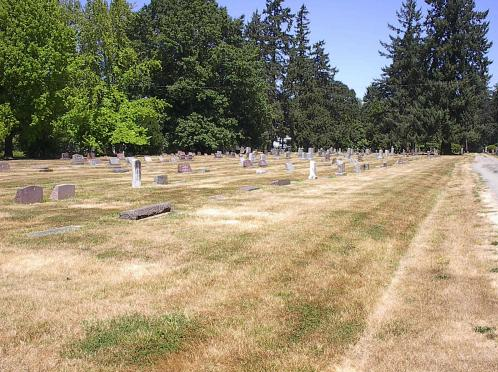 Although cremation and other alternative methods of disposing of the dead are becoming more common, most people who die in Corvallis are still buried in any of the 14 cemeteries which surround the community.
Although cremation and other alternative methods of disposing of the dead are becoming more common, most people who die in Corvallis are still buried in any of the 14 cemeteries which surround the community.
Some of these are small family plots where only one or two family members are buried on private land. Some are on the grounds of religious organizations. Some were established by fraternal orders, and some were created in more recent times by “associations” as more utilitarian “memorial gardens”.
In the older cemeteries, though, like Crystal Lake Cemetery (founded in 1850 by the Masonic Lodge), the markers rise up like the headboards of beds or the fronts of houses. It’s rare to see two in a row that are alike: pink granite carved with roses stands next to a white marble lyre or a gray obelisk. Many of these markers have sat in the ground for a generation, a lifetime, sometimes two entire lifetimes, with moss and lichen spreading across them while the soil beneath them churns with the passing years. This year, volunteers have come to Crystal Lake to learn the gentle art of removing growth from stone without scratching the polish on a flat surface, or ruining the fine details in a carving.
Many of the graves at Crystal Lake are historic: the graves of the Avery Family who were among the founders of the village of Avery (later called Marysville, and later still Corvallis), and Louis Southworth (one of the first African–Americans to live in Oregon)
One of the tallest monuments at Crystal Lake is a literal watchtower where a Union soldier stands watch, carved from Vermont granite: in 1908, at the same time that cheap mass-produced brass figures of Confederate generals were being set up all over the South to intimidate African–Americans (the same statues which are now finally being removed, with many complaints by Confederate sympathizers), the Grand Army of the Republic (GAR) commissioned a monument to the Union soldiers – however, the graves of three Corvallis African–American women were dug up and displaced to make room for the GAR monument.
As time passes at Crystal Lake, history moves on. A newer section has newer graves which take on the Brutalist character of the modern “memorial gardens”, the markers set flush to the ground for easy mowing. The contrast with the older sections is obvious, but the dead in neither section have voiced any complaints about the other… yet. If someone has a dream on Halloween Night, perhaps the dead at Crystal Lake will speak on the matter, providing a sequel to Mark Twain’s famous story, A Curious Dream.
By John M. Burt
Do you have a story for The Advocate? Email editor@corvallisadvocate.com


